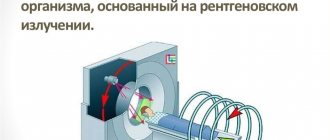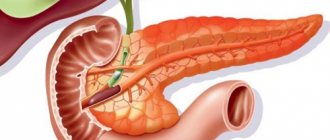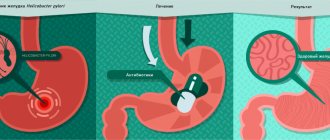An abdominal abscess is a purulent neoplasm surrounded by a pyogenic capsule and located in the space below the diaphragm. The symptoms of the disease are determined by the location and size of the abscess. The pathological condition requires urgent resort to gastroenterological surgery. Delay in surgical intervention is associated with the risk of spreading infection due to rupture of the capsular membrane.
Etiology
Doctors have determined that an abscess in the human body begins to appear after injuries, infectious diseases, perforations and inflammation. The subphrenic type develops when infected fluid from the affected organ moves to the top of the abdominal cavity. Neoplasms in the middle part of the space progress due to rupture or damage to the appendix, inflammation in the intestines, or diverticulosis. Abscesses of the pelvic cavity are formed for the same reasons as those listed above, as well as due to diseases of the organs that are located in this area.
The formation and progression of the disease is facilitated by the presence of the following bacteria:
- aerobic – Escherichia coli, Proteus, streptococci, staphylococci;
- anaerobic – clostridia, bacteroides, fusobacteria.
In addition to bacteria, the source of the purulent process can be the presence of parasites in the body.
The appearance of an abscess in the appendix or pancreas is provoked by an infectious effect. An abscess develops in the interintestinal space after destructive appendicitis, perforation of ulcerative formations and purulent peritonitis.
Abscesses in the pelvic area in women are formed as a result of gynecological pathologies. The reasons for the formation of a tumor in other organs of the abdominal cavity may be as follows:
- in the kidneys - provoked by bacteria or infectious processes;
- in the spleen - the infection penetrates the organ through the bloodstream and damages the spleen;
- in the pancreas - appear after an attack of acute pancreatitis;
- in the liver - malignant bacteria enter the liver from the intestines through lymphatic vessels, from an infected gallbladder, from an infection site in the peritoneum, or from another organ.
Often, an abscess is not a primary pathology, but only a complication of various ailments. Doctors diagnose that after surgery, such a purulent formation may form in the abdominal cavity.
Abscess
Abdominal abscess - symptoms and treatment, causes, diagnosis of the disease
Abdominal abscess –
This is a pathology with the presence of a limited abscess in the abdominal cavity, enclosed inside a pyogenic capsule.
Causes
The disease is caused by various injuries, infectious diseases in the intestines, perforation of organs, inflammatory movements in other organs of the abdominal region.
The formation of the subdiaphragmatic type occurs when fluid becomes infected inside the peritoneum, for example, due to a perforated appendix, moving upward. The appearance of an abscess in the middle lobe of the peritoneal zone is facilitated by a rupture or tear of the large intestine of the appendix, inflammatory processes in the intestines, or diverticulosis.
The development of the disease is often caused by infectious processes in the appendix and pancreas - pancreatitis. Localization of pain occurs in the lower back. They are especially pronounced when bending the leg at the hip joint.
Interintestinal suppuration develops due to destructive appendicitis, perforated ulcers of the stomach, duodenum, and diffuse purulent peritonitis suffered by the patient.
Kinds
In accordance with the pathogenetic mechanisms, abscesses can be post-traumatic, postoperative, perforated, or metastatic. Based on their location relative to the peritoneal area, they are classified as retroperitoneal, intraperitoneal, and combined. According to the location - subdiaphragmatic, interintestinal, appendicular, pelvic (suppuration of the Douglas area), parietal, intraorgan.
Symptoms
At the very beginning of the onset of such a pathology, the clinical picture will not be definite:
- an increase in temperature of an intermittent or hectic nature;
- chills and tachycardia;
- paralytic obstruction in the anus;
- muscle tension in the anterior wall of the organ;
- lack of appetite;
- severe nausea.
The subphrenic appearance appears:
- pain in the hypochondrium with pronounced irradiation to the area of the shoulder blade, back, shoulder girdle, which intensifies with deep breaths;
- walking, during which the patient bends in the direction where there is noticeable discomfort, while supporting the area of the unhealthy hypochondrium with one hand;
- an increase in febrile temperature of intermittent nature.
With an illness in the pouch of Douglas, people are bothered by a feeling of constant heaviness and fullness; they suffer from colic in the lower abdomen, frequent and painful urination, frequent bowel movements or diarrhea with mucus, and tenesmus. Body temperature may increase to febrile levels.
In the presence of interintestinal types, patients experience dull pain with moderate manifestations without clear localization, periodic swelling.
Treatment
Therapy involves surgical intervention to eliminate the abscess and drain it. The surgical method of physiatry is fraught with significant difficulties due to the fact that there is a danger of opening the free pleural area or the abdomen itself and their infection becomes likely.
It is for this reason that the surgeon is obliged to find the shortest path to suppuration under the diaphragm; in such a case, an incision cannot be made in serous areas. Doctors know the approach to the lumen under the diaphragm through the abdominal cavity and extraperitoneal access with resection of the ribs from the back.
The latter is more preferable, as it makes it possible to avoid massive bacterial contamination inside. As a result of this method, the area between 6–7 ribs is cut from the paravertebral line to the mid-axillary line.
The transitional fold in the pleura is bluntly disconnected from the septum upward, after which the pustular formation itself is cut and emptied.
It should also not be forgotten that there is a possibility of recurrence of the growth under the septum if its emptying was incomplete or the abscess formed in a new place.
Prevention
Prevention consists of timely and adequate elimination of signs of diseases of all organs located in the abdominal region, early diagnosis of acute appendicitis and rapid surgical intervention.
Source: https://idoctor.kz/illness/865-abstsess-bryushnoy-polosti
Classification
In medical practice, doctors have repeatedly encountered various forms of the disease. In this regard, abdominal abscesses are divided into the following types:
- intraperitoneal;
- retroperitoneal;
- intraorgan.
According to the original source, an abscess is divided according to the following characteristics:
- after injuries;
- after operation;
- metastatic;
- perforated.
Depending on the pathogen that provoked the purulent process, it is divided into:
- bacterial;
- parasitic;
- necrotic.
Abscesses can be of different quantities, namely:
- single;
- multiple.
They also note the difference in the purulent process depending on the location:
- parietal;
- intraorgan;
- intermuscular;
- subdiaphragmatic;
- appendicular;
- pelvic.
How dangerous is the accumulation of pus in the abdominal cavity?
The pathology is dangerous due to the development of a number of complications. An abscess located in the abdominal painful cavity is fraught with:
- Diffuse peritonitis if the capsule ruptures. It manifests itself with symptoms consisting of acute pain, fever, deterioration in general health, rapid heartbeat, and muscle tension in the abdominal area.
- Sepsis, which is a systemic reaction in response to an inflammatory process characterized by the accumulation of pus. The condition is dangerous. It manifests itself in the severity of symptoms of intoxication, necrosis of internal organs, and the development of multiple organ failure.
If an abscess process is diagnosed in a large abdominal cavity, urgent surgical intervention is required. If the capsule is opened in a timely manner, the purulent-necrotic fluid is completely eliminated, antibiotic therapy is completed, the specialists’ forecasts are positive.
Symptoms
Basically, the signs of the disease manifest themselves in different ways. Most often, an abdominal abscess is characterized by fever and discomfort in the abdominal area. Also, the progression of the disease is characterized by nausea, broken bowel movements, frequent urination, poor appetite and weight loss.
The pathology also has characteristic symptoms:
- accelerated heartbeat;
- tense muscles of the anterior abdominal wall.
If the disease has developed in the subdiaphragmatic zone, then other indicators are added to the above-mentioned main signs:
- painful attacks in the hypochondrium area, which progress with inhalation and move to the shoulder blade;
- change in the patient’s walking – the body leans to the side;
- high body temperature.
All about abdominal abscess
An abscess is a fairly common pathology, regardless of the progressive development of medicine.
An abscess is an abscess or abscess that occurs with damage to the mucous membranes or skin and the development of pathogenic microflora in the body.
The process is accompanied by purulent inflammation, despite its localization. If this pathology is detected, it is necessary to contact specialists to eliminate the problem.
General information
An abscess (lat. Abscessus - abscess) is a cavity that contains pus, but is limited by a tissue and pyogenic membrane (purulent membrane) . An abscess must be distinguished from diseases such as:
- empyema - pus collects in the organ cavity;
- phlegmon – encapsulation of purulent accumulations does not occur.
The peritoneum is sufficiently plastic and has adhesions between its parietal layer, organs and omentum for the development of limited inflammation to occur and a capsule to form. That is why the second name for an abdominal abscess is limited peritonitis. Typically, an abscess can be caused by the following bacteria:
- gram-negative bacteria (enterobacteria);
- streptococci;
- bacteria of the Bacteroides fragills group and Streptococcus bovis.
Pathology can develop both externally and internally: in muscles, bones, subcutaneous tissue, internal organs, etc.
Classification of the pathological process
There are several classifications of abdominal abscess, which depend on various factors. Depending on their localization, abdominal abscesses can be:
- retroperitoneal;
- intraperitoneal;
- combined abscesses.
Retroperitoneal and intraperitoneal abscesses are localized in the area of anatomical canals, abdominal bursae, pockets and cellular spaces of retroperitoneal tissue. Retroperitoneal abscess occurs in 70% of cases, the remaining percentage is due to the development of purulent inflammation in other places.
In addition to the above classification, abscesses can have the following types according to their localization:
- interintestinal;
- pelvic (Douglas space);
- subdiaphragmatic;
- appendicular;
- wall;
- intraorgan: abscesses of the liver, pancreas, spleen).
Based on the number of ulcers, inflammations are divided into single and multiple.
According to their origin, abscesses are divided into parasitic, bacterial (microbial) and abacterial (necrotic).
Regarding the pathogenetic mechanism, postoperative, post-traumatic, metastatic and perforating abscesses of the abdominal cavity are distinguished.
What leads to the development of purulent inflammation?
The main reason for the appearance of an abscess in the abdominal cavity is secondary peritonitis, which is a consequence of the penetration of intestinal contents into the abdominal cavity . Also often purulent inflammation can occur during gangrenous-perforated appendicitis, when tissue necrosis occurs.
In addition, the inflammatory process can develop when blood, effusion or pus penetrates when:
- traumatic injuries;
- failure of anastomoses (natural connection of two hollow organs: ducts, vessels);
- drainage of hematomas.
An abscess may develop inside the abdominal cavity after surgery as a result of necrosis of the entire pancreas or part of it due to self-digestion by its own enzymes (pancreatic necrosis). Most often, the pathology develops 3-5 weeks after the onset of peritonitis.
Purulent inflammatory processes in the female genital organs can cause an abscess:
- piovar;
- adnexitis;
- pyosalpinx;
- parametritis;
- acute salpingitis.
This pathology can also be a consequence of pancreatitis - inflammation of the pancreas. Its enzymes affect the surrounding fiber, and this provokes the development of the inflammatory process.
Some diseases may well cause the development of an abscess in the abdominal cavity:
- Crohn's disease;
- paranephritis;
- acute cholecystitis;
- tuberculous spondylitis;
- perforation of the ulcer;
- spinal osteomyelitis.
Symptoms
At the beginning of the appearance of pathology in the form of an abscess, the clinical picture is difficult to determine . Symptoms may include:
- chills;
- painful rapid heartbeat - tachycardia;
- changes in body temperature that occur several times a day by 3-4°;
- gradual or sudden alternation of normal and high body temperature;
- increased nausea;
- paralytic obstruction in the anus;
- lack of appetite;
- muscle tension in the anterior wall of the damaged organ.
The subphrenic type of abscess is characterized by the following symptoms:
- feverish type increase in temperature (up to 39 °C);
- when walking, the patient tends to bend his body to the side, which causes discomfort;
- pain in the hypochondrium, which intensifies with inhalation and radiates to the back, shoulder blade or shoulder girdle.
If the inflammation is localized in the pouch of Douglas, then the patient tends to feel constant heaviness and distension, colic in the lower abdomen, painful and frequent urination, frequent bowel movements, and sometimes diarrhea with mucus and tenesmus. Body temperature rises to 39 °C.
Interintestinal abscesses are accompanied by dull pain. Painful sensations appear moderately and do not have a clear localization. Sometimes swelling occurs.
Diagnostics
During the initial examination, the doctor first of all pays attention to the position of the patient, which he needs to alleviate the pain and discomfort accompanying the disease. As a rule, these positions are: lying on your back or side, half-sitting or bending over.
Then the specialist looks at additional visible symptoms of the disease: the condition of the tongue (when inflamed, it is dry with a grayish coating) and the abdomen (mild bloating). The doctor must palpate the abdominal area to indicate the location of the abscess, so the patient will feel pain at the site of the purulent formation.
In the case of a subphrenic abscess, asymmetry of the chest is visualized; the lower ribs and intercostal spaces may protrude.
In case of an abdominal abscess, a general blood test is taken, which detects acceleration of ESR (erythrocyte sedimentation rate), neutrophilosis (increased concentration of neutrophil granulocytes in the blood), leukocytosis (increased number of leukocytes in the blood).
The final diagnosis is made during examinations using radiography.
Intraorgan abscesses of the abdominal cavity
Plain radiography allows you to determine not only the presence of an abscess, but also the level of fluid. X-rays of the stomach and esophagus, fistulography and irrigoscopy determine how much the stomach or intestinal loops are pushed aside by the infiltrate. This examination of the gastrointestinal tract is called contrast.
If the abscess is located in the upper part of the abdominal cavity, then diagnosis is carried out using ultrasound. For complications, CT and diagnostic laparoscopy are often used.
Treatment methods
An abscess that has formed in the abdominal cavity can be treated with drainage (surgical or percutaneous) or intravenous antibiotics.
In any case, purulent inflammations are eliminated using the drainage method. Drainage is performed surgically or using a catheter. Drainage through a catheter, which is installed under ultrasound or CT guidance, is the best treatment method in such conditions:
- a small amount of inflammation;
- the drainage path does not pass through adjacent organs, the colon, peritoneum or pleura.
Surgical intervention is carried out in order to open the abscess itself, carry out the procedure of drainage and removal of residues. After access to the abscess is made, a drainage is placed, with the help of which the affected area is washed.
Access to purulent inflammation is chosen relative to localization:
- directly through the abdominal cavity they get to the subdiaphragmatic abscess;
- lumbotomy (surgical access to the organs of the retroperitoneal space) is necessary for psoas abscess;
- by transrectal or transvaginal penetration, purulent inflammations in the pouch of Douglas are opened;
- with multiple abscess, the abdominal cavity is opened.
Surgical treatment of an abscess should be combined with the administration of antibiotics . Prescribing antibiotics is not an independent remedy against an abscess, but limits the spread of infection by suppressing anaerobic and aerobic microflora. Fluoroquinopones, aminoglycosins and cephalosporins are prescribed before and after surgery.
A complex of diagnostic and therapeutic procedures is of great importance.
Nutrition should be enteral, that is, the administered mixtures enter through the mouth, a tube in the intestines or stomach and are absorbed naturally through the mucous membrane of the gastrointestinal tract.
If this is not possible, then it is recommended to start parenteral nutrition early - nutrients enter the body without entering the intestinal mucosa (most often intravenously).
Important information! If timely treatment is not started, serious consequences are likely to occur. Sepsis, peritonitis, or breakthrough of pus into the pleural or abdominal cavity may develop.
Prognosis and prevention
The prognosis of an abdominal abscess depends on its type. If this is a single inflammation, then the prognosis is usually favorable. In case of multiple abscesses – negative. But in our time, advanced types of purulent inflammation rarely occur, since modern medicine makes it possible to eliminate lesions at the initial stage if they are detected in a timely manner.
Prevention of abscess includes timely elimination of:
- gastroenterological diseases;
- acute surgical pathologies;
- inflammation in the female genital area;
- adequate management of the recovery period after the intervention.
Features of abscess in children
It should be noted that abscess in children most often occurs in the subcutaneous tissue, but, nevertheless, cases of development in muscle and bone tissue, and even between organs, are not excluded.
Abscesses of the appendicular type of the abdominal cavity in children can occur quite often up to 13 years of age.
There are also cases where administered scarlet fever, diphtheria toxoids, polio vaccines and antibiotics caused the development of abscesses. Treatment for children is similar to that for adults.
It is important to remember that an abscess can be very life-threatening if it is not diagnosed in time and adequate treatment is not started. Self-administration of medications or folk remedies will not help cope with this inflammatory process. That is why, if you experience an uncomfortable feeling in the abdomen, you should immediately consult a specialist.
- Elena Avdienko
Source: https://pancreatit.info/vse-ob-abstsesse-bryushnoy-polosti/
Diagnostics
During the initial examination of the patient, it is important for the doctor to determine the main symptoms. When taking a horizontal position, the patient feels discomfort in the area of the purulent process. Also, when diagnosing an abscess, it is important to take into account the condition of the tongue - a grayish coating and dryness of the oral mucosa appear. The abdomen becomes slightly swollen when inflamed. The doctor must palpate the anterior abdominal wall, during which the patient is probed for the inflamed area. If an abscess is detected, the patient will feel severe pain.
After a physical examination, the patient is referred for general clinical and biochemical tests of blood, urine and feces.
When diagnosing the disease, it is still necessary to conduct the following instrumental studies:
- Ultrasound;
- X-ray;
- CT and magnetic resonance imaging;
- puncture.
Image of a cavity with an abscess
X-ray allows you to detect in the patient’s body on the affected side the dome of the diaphragm, which has risen slightly, and a reactive effusion can be detected in the pleural cavity. And with the subphrenic type of abscess, a gas bubble with a certain level of liquid underneath it is noticeable in the picture.
In medicine, ultrasound is considered the best research method. During such a study, it is possible to accurately diagnose the disease, examine the condition of the organ and determine the location, size and density of the abscess.
In case of complicated diagnosis of the disease and in order to establish a differential diagnosis, doctors prescribe computed tomography and laparoscopy.
Abdominal abscess: symptoms, diagnosis and surgery
An abdominal abscess is a nonspecific inflammatory process in which a cavity filled with purulent contents forms between the internal organs. The walls of the formation can be anatomical depressions, “pockets”, leaves of the omentum or ligaments. The disease is usually accompanied by intoxication of the body and severe pain.
Nonspecific (general) manifestations
- undulating fever from 37.5 °C to 39-40 °C with chills and sweating;
- rapid heartbeat (tachycardia) due to hyperthermia;
- general intoxication (headache, nausea, loss of appetite, weakness);
- pallor or marbling of the skin;
- abdominal pain of varying intensity and localization, which can spread to the chest and lumbar region;
- local tension in the muscles of the anterior abdominal wall.
Signs of intestinal paresis may occur: constipation, severe bloating, vomiting. A clinical blood test reveals changes characteristic of an acute inflammatory process: increased ESR values, leukocytosis with neutrophilia.
Specific manifestations
The peculiarity of the clinical picture of an abscess also depends on its location:
- Subphrenic abscess. Most often it forms after surgical interventions in the abdominal cavity, as a result of trauma. Typical localization is on the right, in the liver area. With this arrangement, pain occurs in the right hypochondrium and can radiate to the chest, right shoulder girdle, and intensify while walking or coughing.
- Liver abscesses. They are often multiple in nature and develop against the background of wounds and biliary tract infections. Painful sensations are localized in the right hypochondrium, less often in the epigastric region, and constant nausea is characteristic. Fast walking and sudden bending forward can increase pain.
- Appendiceal abscess . Appears against the background of an inflammatory infiltrate around the altered appendix. The first stages are characterized by a decrease in pain in the iliac region and a decrease in body temperature. After 6-7 days, the symptoms return with renewed vigor, and a painful, loose formation is palpated.
- Abscess of the pouch of Douglas. It is characterized by the accumulation of pus in the retrouterine space as a result of inflammatory diseases of the uterus, ovaries, fallopian tubes or appendiceal process. In addition to severe pain in the lower abdomen, a woman may be bothered by a frequent urge to urinate, defecation, a feeling of fullness in this area, and diarrhea.
- Interintestinal abscesses. Appear due to the accumulation of pus between the loops of the small and large intestines; most often multiple. The patient is bothered by constant aching or sharp pain in the abdomen without precise localization, nausea, and vomiting. Intestinal paresis is accompanied by flatulence, constipation, and abdominal asymmetry.
Cavities with pus in the area of the pancreas and spleen are less common and have similar symptoms to acute inflammation of these organs (destructive pancreatitis, splenitis).
Do you have intestinal diseases? — Take the online test!
Causes of the disease
The formation of abscesses in the abdominal cavity can result from:
- surgical intervention with non-compliance with antiseptic rules, “forgotten” instruments, napkins;
- knife, blunt abdominal trauma, gunshot wounds;
- acute cholecystitis, destructive pancreatitis, perforated ulcer of the duodenum or stomach;
- acute phlegmonous appendicitis, inflammation of the uterine appendages;
- diffuse peritonitis.
In the formation of purulent cavities, microbial infection and tissue necrosis play a large role, and parasitic infestations play a somewhat lesser role.
Loading …
Diagnostic methods
If complaints characteristic of purulent inflammation appear, you should contact a therapist, who, after examination and questioning, should redirect the patient to the appropriate specialist.
This could be a surgeon or a gynecologist.
In case of acute development of symptoms or a sharp deterioration of the condition, it is recommended to call an ambulance team, which will take the patient to a specialized department.
To confirm the diagnosis, as well as to find its cause, the following studies may be prescribed:
- Ultrasound diagnostics of the abdominal organs. The technique is excellent for searching for encysted pus in the liver, spleen, under the diaphragm, in the pouch of Douglas. Ultrasound can also help determine the cause of the disease (acute appendicitis or pancreatitis, purulent salpingo-oophoritis, etc.).
- CT scan. The study is prescribed if ultrasound is not very informative, to examine hard-to-reach areas. CT allows one to identify not only the location of the formation, but also the number of abscesses and their size.
- Plain radiography of the abdominal cavity. The technique makes it possible to distinguish a subdiaphragmatic abscess from a hepatic or interintestinal one. Cavities with pus are revealed in the form of rounded formations with a liquid level.
- Clinical, biochemical blood tests, blood sterility testing . The inflammatory process is supported by high leukocytosis with a neutrophilic shift in the formula, high ESR values, increased liver enzymes, the appearance of C-reactive protein, procalcitonin.
- Diagnostic laparoscopy. An examination of the abdominal cavity is performed through a puncture in the abdominal wall using special equipment - an endoscope. If necessary, such a diagnosis can result in a full-fledged operation.
Surgical therapy
In most cases, a minimally invasive technique is used - drainage of the formation with a puncture needle, aspiration of pus and insertion of a special rubber tube into the cavity. Through it, the site of inflammation is sanitized by introducing antiseptic solutions and antibiotics.
For subphrenic, subhepatic and interintestinal abscesses, drainage is carried out through the anterior abdominal wall under ultrasound control. If pus has accumulated in the pelvis, then access occurs through the rectum or retrouterine space.
If the previous method is ineffective, in case of a hard-to-reach location of the abscess, general access is performed through a midline incision. It is mandatory to leave drains in the abdominal cavity for further drainage of pus and regular rinsing with antiseptic solutions.
Drug therapy
Surgery will not bring the desired effect without timely administration of systemic antibiotic therapy. For this purpose, antibiotics with a wide spectrum of action are used (protected penicillins, 3rd generation cephalosporins, fluoroquinolones). In some cases, they resort to prescribing reserve antibiotics. The optimal method of administration is intramuscular or intravenous.
Proteolysis inhibitors (Gordox, Kontrikal) help stop the processes of tissue breakdown and also improve the penetration of antibacterial drugs into the site of inflammation. If the patient's response to systemic antimicrobial therapy is insufficient, immunoglobulins, which contain antibodies against a large number of microorganisms, are added to treatment.
Possible complications and prognosis for life
Without proper treatment, the risk of developing the following complications increases:
- Diffuse peritonitis due to rupture of the abscess capsule. It manifests itself as acute pain, deterioration of the condition, the appearance of severe tension in the abdominal muscles, tachycardia, and fever.
- Sepsis is a systemic response of the body to purulent inflammation. It is characterized by severe intoxication, the formation of necrosis in the internal organs and multiple organ failure.
In the case of surgical intervention, aspiration of pus and the appointment of adequate antibacterial therapy, the prognosis of the disease is favorable - a complete cure is possible.
Source: https://ProKishechnik.info/zabolevaniya/abscess-bryushnoj-polosti.html
Treatment
After the doctor has performed an ultrasound and the diagnosis of “abdominal abscess” has been confirmed using CT, a treatment regimen can be prescribed. The most effective and drastic method of treatment is surgery.
The method and extent of surgical intervention depends on the location of the pathological process. In case of a purulent process of extensive size, an incision is made in the anterior abdominal wall with further removal of the abscess.
If the patient has several small abscesses, then the drainage method is used. In this case, several small punctures are made through the skin and, under the control of an ultrasound machine, the pus is removed.
When treating a patient, doctors try to find more adequate and conservative ways to eliminate the disease to prevent various complications. At any stage, the patient is prescribed antibiotics. Such drugs are used to reduce hematogenous propagation of infection, so drug therapy is carried out before and after surgery. The doctor may also prescribe medications to suppress intestinal microflora.
Abdominal abscess: ICD-10 code, symptoms, causes, complications, diagnosis and treatment
An abscess (from the Latin “boil”) is a cavity filled with pus, the remains of cells and bacteria. Features of clinical manifestations depend on its location and size.
An abdominal abscess develops as a result of pyogenic microbes entering the body through the mucosa, or when they are carried through the lymphatic and blood vessels from another inflammatory focus.
Concept and disease code according to ICD-10
An abdominal abscess is the presence of an abscess in it, limited by a pyogenic capsule, formed as a result of the body’s protective reaction to isolate pus from healthy tissues.
The plasticity of the peritoneum, the adhesions between its omentum, pariental layer and internal organs help isolate the source of inflammation and form a capsule that prevents the purulent process from spreading. Therefore, an abdominal abscess is also called “limited peritonitis.”
ICD-10 codes for abdominal abscesses:
- K75.0 – liver abscess;
- K63.0 – intestinal abscess;
- D73.3 – splenic abscess;
- N15.1 – abscess of perinephric tissue and kidney.
Types of formations and causes of their occurrence
Based on their location in the abdominal cavity, abscesses are divided into:
- retroperitoneal (retroperitoneal);
- intraperitoneal (intraperitoneal);
- intraorganic (formed inside organs).
Retroperitoneal and intraperitoneal abscesses can be located in the area of anatomical canals, bursae, pockets of the abdominal cavity, as well as in the peritoneal tissue. Intraorgan abscesses form in the parenchyma of the liver, spleen, or on the walls of organs.
The causes of abscess formation can be:
- Secondary peritonitis due to intestinal contents entering the abdominal cavity (during drainage of hematomas, perforated appendicitis, trauma).
- Purulent inflammatory processes of the female genital organs (salpingitis, parametritis, bartholinitis, pyosalpinx).
- Pancreatitis. In case of inflammation of fiber under the influence of pancreatic enzymes.
- Perforation of an ulcer of the duodenum or stomach.
Pyogenic capsules with purulent contents most often occur under the influence of aerobic bacteria (Escherichia coli, streptococcus, staphylococcus) or anaerobic (fusobacteria, clostridia).
Subhepatic form
A subhepatic abscess is a typical variant of an abdominal abscess. An abscess forms between the surface of the lower part of the liver and the intestines, and, as a rule, is a complication of diseases of the internal organs:
- pancreatic necrosis;
- cholecystitis;
- purulent appendicitis;
- strangulated hernia.
The clinical picture of a subhepatic abscess depends on the severity of the underlying disease and the size of the abscess. The main features are:
- pain in the right hypochondrium, radiating to the back, shoulder, and intensifying if you take a deep breath;
- tachycardia;
- fever.
Symptoms
When an abscess forms, general symptoms of intoxication first appear:
- fever;
- chills;
- loss of appetite;
- abdominal muscle tension.
Subphrenic abscesses are characterized by:
- pain in the hypochondrium, radiating to the shoulder blade, shoulder;
- dyspnea;
- cough.
With retroperitoneal abscesses, pain is observed in the lower back, which increases with flexion of the hip joint.
Complications
The most dangerous complication of an abdominal abscess is rupture of the abscess and the occurrence of peritonitis, as well as sepsis.
It is important to diagnose an abscess as early as possible and carry out the necessary treatment, so if you have the slightest pain in the abdomen, you should contact a gastroenterologist.
Diagnosis and treatment of abdominal abscesses
During the initial examination, the doctor pays attention to what body position the patient takes to reduce pain - bent over, half-sitting, lying on his side. Also observed:
- Dryness and grayish coating of the tongue.
- Pain on palpation in the area where the abscess is located.
- Asymmetry of the chest and protrusion of the ribs with subphrenic abscess.
A general blood test reveals an acceleration of ESR, leukocytosis, and neutrophilia. Basic diagnostic methods:
- X-ray of the abdominal cavity;
- Ultrasound;
If diagnostics are difficult, examination is performed using CT and MRI.
Treatment of abdominal abscesses is only surgical. The abscess is opened and the purulent contents are drained.
For multiple abscesses, a wide abdominal opening is made, and a drain is left to irrigate and remove pus. Next, intensive antibiotic therapy is carried out.
Ultrasound shows an abdominal abscess:
Prognosis and prevention
The prognosis for the treatment of uncomplicated abscesses is favorable. To prevent their occurrence, it is necessary to promptly treat gastroenterological diseases and inflammation of the genitourinary system. And also follow all medical recommendations after operations on internal organs.
Source: https://gidmed.com/gastroenterologiya/zabolevaniya-gastro/bryushnaya-polost/abstsess-bryushnoj-polosti.html
Forecast
Since an abscess in the abdominal cavity is a disease that can recur even after surgery and cleansing of the organ, the prognosis for life depends on many factors. To establish the expected life expectancy, the doctor takes into account examination indicators, the general condition of the patient, his age, the extent of damage to the organ by infection and the location of the abscess.
According to statistics from doctors, 10–35% of patients die from an abscess. If the patient develops several ulcers, the prognosis will be unfavorable.
Symptoms
At the onset of the disease, with any type of abdominal abscess, general symptoms prevail: intoxication, intermittent (intermittent) fever with hectic temperature, chills, tachycardia. Nausea, loss of appetite, and vomiting are often observed; Paralytic intestinal obstruction develops, severe pain in the abscess area, and tension in the abdominal muscles are determined.
The symptom of abdominal muscle tension is most pronounced with abscesses localized in the mesogastrium; ulcers of subphrenic localization, as a rule, occur with erased local symptoms. With subdiaphragmatic abscesses, you may experience pain in the hypochondrium during inspiration with irradiation to the shoulder and shoulder blade, cough, and shortness of breath.
Symptoms of pelvic abscesses include abdominal pain, increased urination, diarrhea, and tenesmus due to reflex irritation of the bladder and bowels. Retroperitoneal abscesses are characterized by pain localized in the lower back; in this case, the intensity of pain increases with flexion of the lower limb at the hip joint. The severity of symptoms is related to the size and location of the abscess, as well as the intensity of antimicrobial therapy.
Pathological secretion in cervicitis
Cervicitis is, in simple terms, inflammation of the mucous membrane of the cervix. It can be caused by a variety of reasons. These include sexually transmitted infections (gonorrhea, trichomoniasis, chlamydia), fungal infections, hormonal disorders, and mechanical damage to the integrity of the mucous layer. But most often the cause is the proliferation of opportunistic microorganisms, which occurs against the background of a decrease in the body’s defenses.
As a result of the action of provoking factors, a focus of inflammation appears, which is initially accompanied by increased secretion of odorless mucous secretion. As the disease progresses, dull pain in the abdominal area, false urge to empty the bladder, and pain during sexual intercourse appear.
In addition, as a result of damage to the integrity of the mucous membrane, a woman may experience sanguineous discharge after sex, the appearance of a purulent secretion, the color of which may vary depending on the pathogen that provoked the pathology.
- So with gonorrhea, purulent vaginal discharge will be yellow.
- If the cause is trichomoniasis or chlamydia, the structure of the discharge will be similar to foam.
- Candida fungi provoke white, curdled discharge, which, in advanced forms of the disease, may contain an admixture of pus.
With cervicitis, the cervix becomes loose, increases in size, and acquires a reddish tint. Once acute cervicitis occurs, it threatens to develop into a chronic disease. In addition, it often causes cervical erosion.
How to treat? Therapeutic procedures are prescribed by a doctor based on test results, with the help of which it is possible to identify the direct causative agent of the disease. In some cases, it may be necessary to use antibiotics, in others - antifungal drugs, and thirdly - antiviral agents. To strengthen local immunity, it is possible to use immunostimulants, vitamin complexes and drugs that normalize microflora.
Purulent discharge in women: main causes
Purulent discharge in women is a sure sign of trouble. Very often they are accompanied by symptoms such as pain, irritation, redness and swelling of the reproductive organs. At the same time, general health often worsens. In any case, the appearance of pus always indicates that the inflammatory process is progressing in the body.
Let's look at what are the most common causes of purulent discharge in women, and the treatment that is most likely to be used in one case or another.
Inflammation of the urethra
Sometimes the appearance of traces of pus on underwear may not be associated with gynecological problems. Their cause can be inflammation of the urethra (discharge in women comes from the urethra). In this case, symptoms such as pain during urination, increased urge and a feeling of incomplete emptying of the bladder may be observed. Often there is general malaise, pain in the abdomen, and irritation of the area around the urethra.
In women, the cause of such discharge is most often gonorrhea or trichomoniasis. Mechanical damage to the tissues lining the urethra can also provoke inflammation. For example, a Foley catheter, used to remove urine for bladder dysfunction, often causes a similar complication.
Treatment tactics. In this case, everything again depends on the reasons that provoked the inflammation. If we are talking about an STD, then treatment is carried out depending on the type of pathogen. If the inflammatory process occurs as a result of dysfunction of the urinary system, then an integrated approach to treatment is required, including the use of antibiotics, surgical assistance, and vitamin and immune therapy.
Source
Inflammation of the ovaries and fallopian tubes, inflammation after surgery
Sometimes the source of inflammation occurs in the very depths of the female body - the fallopian tubes or ovaries. The signs of such diseases are somewhat different from those listed above.
Thus, the serous discharge observed with this disease most often has a dirty green tint, while no manifestations in the form of itching, burning or pain during urination may be observed at all. However, pain in the lower abdomen with such discharge, on the contrary, is intense and sharp.
Another distinctive feature of mucopurulent discharge during inflammation of the ovaries and fallopian tubes is that their discharge increases significantly with physical activity. Additionally, manifestations of intoxication are recorded.
Another reason for purulent discharge is the occurrence of inflammation after operations on the organs of the reproductive system, for example, after the removal of various tumors. The development of internal inflammation is accompanied by intoxication, an increase in body temperature to critical values, sharp pain in the pelvic region, a reaction from the lymph nodes and intense discharge of a purulent mass that smells repulsive.
Most often, this type of inflammation is caused by E. coli, streptococci, and staphylococci. Ignoring the above symptoms can lead to dangerous consequences - infertility, blood poisoning, and severe intoxication.
How is it treated? Without antibiotics, purulent discharge during inflammation cannot be overcome. In advanced stages of the disease, accompanied by clear signs of intoxication (vomiting, high fever, poor health), not only hospitalization, but also surgery may be necessary. Additionally, the patient may be prescribed immunostimulants, vitamins, hormonal medications - it all depends on what caused the inflammation.











